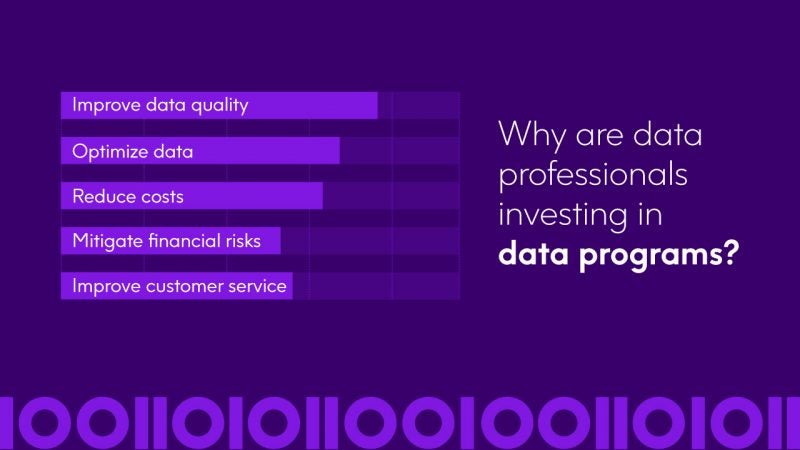Building a business-friendly approach to data governance
THE ARTICLES ON THESE PAGES ARE PRODUCED BY BUSINESS REPORTER, WHICH TAKES SOLE RESPONSIBILITY FOR THE CONTENTS

Precisely is a Business Reporter client
It is fast becoming an imperative for organisations to fuel business intelligence reporting with data that is accurate, consistent and contextual – data with integrity. Data governance is increasingly a key factor in how organisations achieve data integrity, whether it’s to help accelerate confident decision-making and reduce costs, or manage risk and comply with complex regulations.
But how should organisations approach a data governance strategy to deliver optimised and ongoing value to the business, and what steps help ensure its success?
Businesses must start with the “why”
If you plan to implement data governance within your organisation, or you have started but you’re not achieving the results you expected, the first thing you must do is take a step back and ask why you’re implementing it in the first place.
Many data governance programmes fail, either because business teams find them too complex or time-consuming or because they lack real, documented business value. Understanding why you have embarked on this initiative is crucial to get the most out of your data governance journey. And here is the secret: it must be business-led.
If you do not know what the business case is for the implementation of data governance within your organisation, it can be easy to get side-tracked. The “why” is what will guide you in your journey and ensure your organisation is getting what it needs from your data governance initiative.
Key drivers to successful data governance programmes
Research has shown that two-thirds of organisations report improved data quality as a leading benefit, but there were other examples of significant added value too, with respondents reporting overall “higher quality of data analytics and insights” (56 per cent), as well as other benefits relating to “facilitated collaboration” (52 per cent) and “faster access to relevant data” (50 per cent).

Furthermore, the existence of a data governance programme seemed to encourage the adoption of more rigorous processes for data quality measurement. 54 per cent of organisations with data governance frameworks already deployed report that they have mechanisms in place to measure the quality of their data, compared to just 34 per cent who don’t. So, the implementation of a data governance strategy also provides a real opportunity for those seeking to better understand their data, while improving the overall measurement of key business metrics.
A business-friendly approach is crucial
We have seen organisations make the mistake of embarking on a journey to data governance because they believe it to be best practice, or because it is a requirement of a regulated industry. These are all valid drivers of course, but if you do it for these reasons alone it’s highly likely that only the bare minimum will be done to tick the boxes required by your regulator.
We’re seeing a major shift in organisations increasing their investment into an enterprise-wide approach to data governance to ensure high-quality, well-managed information. Bringing the value of data governance to the enterprise is imperative. Without an enterprise-wide data governance approach organisations will fail to capitalise on countless business opportunities and suffer short- and long-term consequences.
So how should you approach data governance in your business? This is a slightly more complex question because the answer will depend on your organisation’s circumstances. Every business is different and why your company is doing data governance will differ to some degree from even your closest competitors. There is not one standard approach.
Three steps to getting started
Data governance expert Nicola Askham recommends the following approach:
1. Look at your corporate strategy – consider the key objectives listed and ask yourself if your data is well enough understood and trusted to deliver those objectives. If the answer is no, it’s clear that data governance is needed to help you achieve your corporate strategy
2. Consider your data strategy – if there already is one. If so, hopefully there is already a data governance section included. If there isn’t, the organisation needs to connect with data stakeholders from across the business and work out what initiatives are planned that rely on data, and why data governance would be important for ensuring success.
3. Search for your data quality horror stories – these are instances where things have gone wrong because either data is missing, or you have had poor quality data and things have gone wrong within your organisation as a result.
“If you gather all that information, you can then do some analysis to identify the drivers for data governance in your organisation,” said Askham. “You’ll be able to talk to anybody, whether they are senior stakeholders or the data users themselves, and you’re going to be able to articulate what the benefits of data governance are going to be to them – and that is going to make you be so much more successful in your data governance initiative.”
In the end, outlining expected outcomes in the data governance business case demonstrates its value across the enterprise and boosts executive buy-in for the necessary funding and resources. Once the business selects the appropriate technologies to accompany its data governance programme, it’s time to focus on building trust in the business’s data. Developing a strategy for data integrity will ultimately support the business in making the confident decisions needed to truly impact the bottom line.
For more help building your own business-led case for data governance, download our eBook, Building a Data Governance Use Case to Get Budget and Buy-in.
